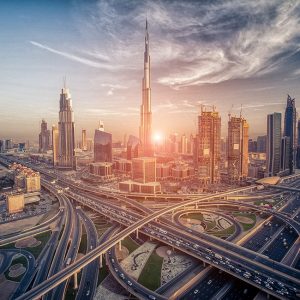Proptech: Buzzword or opportunity?
The UAE’s real estate sector is mesmerised with a new term ‘PropTech’ and everyone wants to know about it and learn from it. Majority stakeholders, buyers, sellers, brokers and developers are all ready to adapt sector innovation as it offers more security, transparency and efficiency.
What is PropTech? PropTech, or property technology, is the use of information technology (IT) to help individuals and companies research, buy, sell and manage real estate. More and more players are coming to the ever-growing robust UAE property market.
Faisal Ali, chief information officer, Gargash, said the UAE is a leading nation in adoption of PropTech as new solutions emerge, business is nothing like as it was done in previous years.
“Most of the stake holders like the developers, buyers, brokers have realised the importance of innovations in the sector. The entire ecosystem is undergoing a change as it offers security, efficiency, transparency and so on…”
The top technologies that are and will continue to disrupt the realty sector are blockchain, AI, VR, AR, drones, IoT, robotics and 3D printing.
Saurabh Dixit, senior manager- IT Enterprise Solutions, Emaar Properties, said the UAE’s property sector is at the beginning of the technology disruption for whatever we have done in 10-15 years in all probability will be doing more than that in next 2-3 years due to emergence of technology advancements in realty as well as surrounding industries.
“The sector is very rapidly gearing up to adapt to the new changes and we will witness radical growth due to industry innovations,” he said.
The traditional buying and selling via a broker would always be shrouded with a mystery to get right price both buyer or a seller. For instance, Dubai-based Inventally provides property inventory reports pre and post tenancy to save clients the hassle of disputes, financial claims and security deposit misusage. These technologies can redefine how owners, operators, tenants, property developers can manage and operate their businesses more efficiently.
“We at inventally.com have decided to embark on a journey to provide a simple yet needed service for our partners across the real estate market to serve landlords and tenants better. The property technologies have seen a significant amount of backing in the past couple of years,” said Ahmed Ali Al Hassoni, chief operating officer, Inventally.com.
There have been three significant waves of PropTech globally. The first wave witnessed the emergence of numerous online listing portals. Aside from listings, these early players put out a sizeable quantity of content and research on the Internet, making a home seeker’s initial search and discovery a lot easier than before. Information was for the first time, truly democratised.
In the second wave of PropTech that followed, a new breed of tech-enabled brokerages appeared on UAE’s fast changing landscape. These firms saw proptech as an assisted sales process and believed in full-stack and transaction closure capabilities, and not just providing a virtual handshake between the buyer and seller or their agents.
Now, a new third wave of PropTech opportunities is emerging across the region, aiming to further disrupt real estate.
“Real estate is still expensive, highly illiquid and industry stakeholders continue to operate in a legally complex playground. This third, and probably the most exciting phase of PropTech will witness startups that grow the green shoots to challenge these fundamental industry principles and this is where the future probably lies,” said Tanuj Shori, founder and CEO, Square Yards.
Dr Syed Mahsud Ali, chief information officer, Azizi Developments, said the UAE is certainly at the forefront for adopting latest technologies in realty sector and we intend to make most of it. “Our portfolio of projects will soon have an entire project based on smarthomes. Property developers have now began to lookout for incorporating technologies that can help them come out with strategies that help all the stake holders.”
Endorsing a similar positive sentiment, Fadi Nwilati, CEO, Kaizen Asset Management, said Kaizen has been involved in several PropTech initiatives that has seen actual savings in operational costs of properties, thus improving returns for everyone.
“We are starting to see practical applications of PropTech in the UAE. And we are seeing serious progress that PropTech is bringing to improve the tenant and resident experience, improving response times, and removing a lot of the friction caused by the various stakeholders involved in managing and running a property. Proptech should be seen as a serious solution contributing to the happiness of residents in the real estate industry, in line with nation’s vision to make the UAE a happy city.”
The two-day second annual PropTech Middle East event, which concluded on Tuesday was attended by leading real estate developers in the region, such as Sobha Group, Nakheel, Diamond Developers, Aldar Properties, Azizi Developments, and Emaar, amongst others.
“Over the coming 10 years, we will see significant technological change in the real estate industry. Buildings will become more human with IOT and other technological improvements connecting individuals to assets. In this rapidly changing environment, the key to achieving customer satisfaction will be to keep the technology in buildings user friendly and plug and play. just like other utilities,” said Martin Berlin, Global Deals Real Estate Leader at PwC. – sandhya@khaleejtimes.com
Source Article:
https://www.khaleejtimes.com/business/local/proptech-buzzword-or-opportunity
Published by Khaleej Times | November 5, 2019



